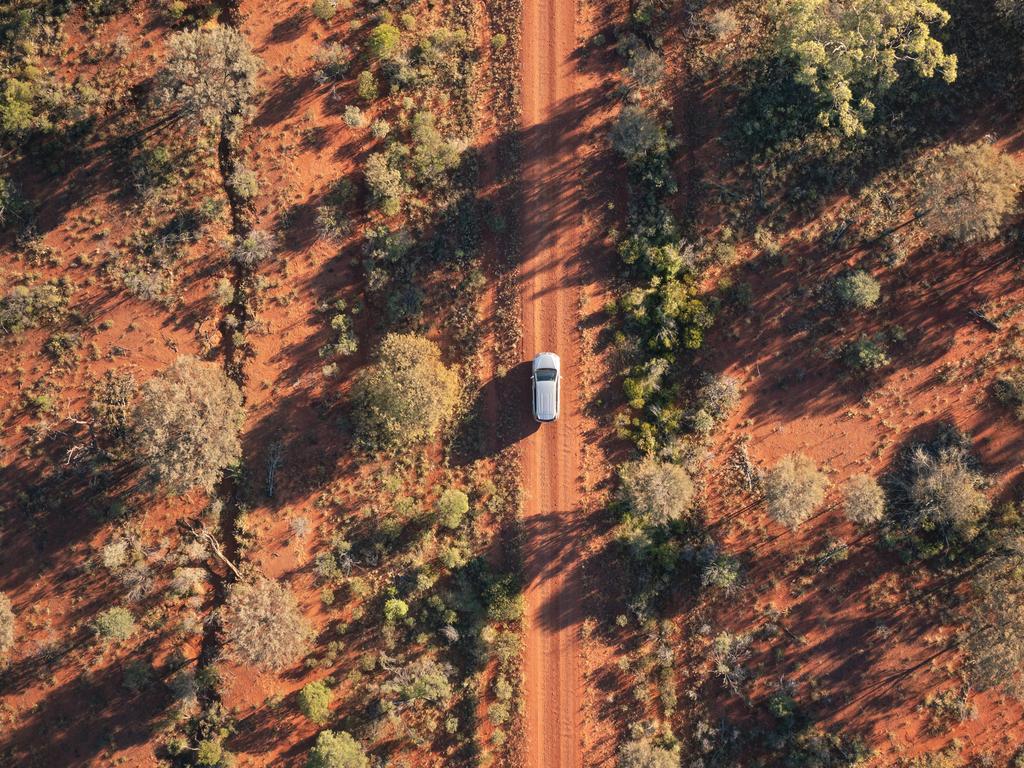Florida’s Overseas Highway: the story behind a legendary road trip
Aptly called the Overseas Highway, this 266km stretch of bitumen soars over mangroves, aqua blue water and has an incredible history.

The southern stretch of US Highway One from Miami to Key West is one of the world’s legendary road trips, a rite of passage for any modern traveller to Florida. The aptly named Overseas Highway soars above the mangrove swamps and coral specks of the Keys (the name for the islets that derives from the Spanish cayo) between the Atlantic and the Gulf of Mexico. But anyone who drives it is mystified to see ghostly remains of an old railway route running parallel to sections of the road, most of them derelict and abandoned. Rusting bridges loom in eerie grandeur, each one an industrial Stonehenge.
They are unlikely monuments to a once-famous train line that ran south of Miami to Key West a century ago. For its lucky passengers, the trip was a futuristic adventure plucked from the pages of Jules Verne. The train would chug at 25km/h across more than 40 bridges, the most spectacular of which was the bluntly named Seven Mile Bridge, an engineering marvel dubbed “the Eighth Wonder of the World”.

As the name suggests, it crossed more than 11km of open ocean, making it the world’s longest freestanding span, supported by concrete pylons embedded in the golden, shifting sands. Travellers gazed in awe at the sparkling emerald water through windows on both sides of the carriage. It was as if they were flying. In the shallows 40m below, they might spot dolphins, sharks, turtles or the enormous tarpon prized by game fishermen. The famous writer and Keys fan, John Dos Passos, called the trip “a dream journey”.
The extraordinary railway was the brainchild of one of America’s lesser-known robber barons, Henry Flagler, who co-founded Standard Oil with John D. Rockefeller. In the early 1900s, Flagler was obsessed with opening up the then remote far south of Florida to the outside world, and in his late 70s pumped more than $US27m (a then fantastical sum) into the Key West Extension, a wildly ambitious seven-year railway project many engineers considered impossible.
Indeed, its construction was wracked by so many disasters that it was referred to as “Flagler’s Folly”. The magnate proved critics wrong in 1912, when the line opened with great fanfare three months before the sinking of the Titanic.

But the train became a similar example of man’s hubris. It enjoyed 23 years of operation, including a golden age during Prohibition when thirsty Americans flocked to rum-soaked Cuba. But in September 1935, a Category 5 hurricane smashed into the Middle Keys – still the most powerful storm to reach US shores – and the iron rail tracks were tossed from their coral beds like strings of spaghetti. Some 600 people were killed. The rails were soon paved over for cars. In the 1980s, a new highway was built alongside much of the old, and most of the original Gilded Age bridges were closed to the public.
Only one 3.5km section of Seven Mile Bridge running from Marathon to Pigeon Key remained accessible, and it grew to hold a beloved place in the hearts of Florida residents, who used it for walking, biking, rollerblading, fishing and sunset watching, despite increasing decay that made it dangerous. “Old Seven”, as it became fondly known, was finally closed in 2016 for an ambitious $US77m restoration that would have impressed Flagler. In 2022, it reopened as a “linear park”, a sort of “tropical High Line” that qualifies as one of America’s most user-friendly historical sites.

To visit it, I drive two hours south of Miami to the gateway village of Marathon. The largest settlement on the Middle Keys covers 13 reef-fringed islands, and was named after a rail worker’s remark in 1908: “Building this railroad has been a regular marathon.” There, the beachfront Isla Bella Resort is decorated with delicate prints of Florida birds by pioneering artist John James Audubon, a regular Keys visitor in the 1830s. Early the next morning, I stroll out the hotel front door to a new access walkway. My first steps on to Old Seven are a thrilling leap back in time. The bridge runs arrow-straight 20m above the waves, with newly paved bike and pedestrian lanes and reinforced hand rails. It is more minimalist than Manhattan’s famous High Line, but nature takes up the slack with its astonishing palette: the winter skies are a piercing blue, the water below fluorescent green. The ocean horizon sparkling on both sides of the bridge is still hypnotic, and recaptures the sense of flying through space. Sea birds soar overhead and at one point I spot a diamond-shaped stingray drifting across the coral-encrusted shallows.

On calmer days, visitors report turtles (five of the seven species can be seen in the Keys, including the enormous loggerheads, named after the sailor’s mistaken cry when they spotted their shells in the waves, “Log ahead!”) and an array of sharks (lemon, blacktip and nurse). The most cherished wildlife sighting is the spotted stingray, which can leap from the water to reveal a three-metre wingspan and whip tail.
My reverie ends abruptly at a wire fence. In the late ’30s, a swing bridge for marine traffic was removed, cutting Old Seven in two. Instead, a wooden walkway now descends to one of Florida’s most serene and otherworldly venues: Pigeon Key. Another preserved slice of 1912, it was used as a workers’ camp during the bridge’s construction, with some 400 men based here. Its vintage wooden cottages still cluster beneath swaying palm trees, their porches picked over by ibises and roofs guarded by pelicans.
“It’s not always so sleepy here,” says Kelly McKinnon, executive director of the Pigeon Key Foundation, which maintains the site. The reopening of Old Seven in 2022 brought a flood of Florida residents who had impatiently awaited the work’s completion, he adds, and the ribbon-cutting ceremony turned into a raucous party: “People were excited. It was like New Year’s Eve.” Saving Old Seven had been a communal effort, promoted by a network of history-loving locals in the group SOS (Save Old Seven).
Although the bridge’s structure was intact, it was a painstaking engineering job. The pylons only needed scraping, but the paving had to be mechanically raised every 3m – roughly 1000 times – to replace the supporting steel girders. To learn more about the enigmatic Flagler and his engineering team, I visit an antique wooden school house that has been turned into one of the more charming museums in the US.

As the warm ocean breeze wafts through the open doors, I inspect photographs and models explaining the construction of the bridge, and for the first time realise just what a half-crazed enterprise the 1912 railway really was.
The litany of catastrophes piled up from day one. Flagler’s 3000 workers were tormented by summer heat and mosquito plagues, and quit in droves. The route was hit by hurricanes three out of seven years, in 1906, 1909 and 1910; the first drowning at least 125 workers who were bunking in houseboats. Construction costs ballooned as engineers imported steel from Philadelphia and hydraulic concrete from Germany.
But miraculously, the work was completed and the first train rolling into Key West in 1912 carried the jubilant, 82-year-old Flagler and his young wife in their private luxury carriage. A crowd of 10,000 greeted him as a hero, with brass bands and schoolchildren singing. “I can hear the children but I cannot see them,” the near-blind magnate said to his wife. He also whispered: “Now I can die happy. My dream is fulfilled.”

Flagler did pass away the following year, unaware that the railroad would never turn a profit before being destroyed in 1935. Still, the memory remains vivid in Pigeon Key, and in other impressive sites on Highway One, such as the sand-fringed Bahia Honda State Park. After pulling into Key West, the southernmost end of the road trip, I visit the few last monuments to Flagler’s Folly, including the original train terminus that has also been salvaged as a museum. But to me the most symbolic site is the Casa Marina hotel, which was funded by Flagler and opened in 1922 to welcome visitors from New York and other chilly northern cities.
Located on the island’s southeastern beach, it is surging with activity, although few of the visitors notice a statue of Flagler in the splendid lobby.
I stroll down to the establishment’s water sports office, called Barefoot Billy’s, and sign up for an archetypal modern travel experience: a jetski tour. Speeding around the turquoise waters, I pass an exhausting array of activity: There are snorkellers, swimmers, paragliders, sailors, water-skiers. Throngs are gathered at Mallory Square to watch the stunning sunset, one of Key West’s daily tourist rituals.
Floridian nature at its wildest defeated Flagler, but his obsession has allowed the world to enjoy the magnificent Keys today. Perhaps that is memorial enough.
In the know
Many travellers take the famous Overseas Highway in a rush; the 266km journey from downtown Miami to Key West at the end of the line can be done in about four hours.
But spend a night 200km en route in Marathon, where Old Seven, the bridge to Pigeon Key, can be crossed on foot, bike or electric tram for $US20 ($31); it’s only a half-hour walk to the key, but allow an afternoon for the museum and to enjoy the ambience.
For a drink afterwards, the Sunset Grille and Raw Bar, a great ramshackle local watering hole, is by the bridge’s start with modest prices and million-dollar views.
If you love to travel, sign up to our free weekly Travel + Luxury newsletter here.




To join the conversation, please log in. Don't have an account? Register
Join the conversation, you are commenting as Logout